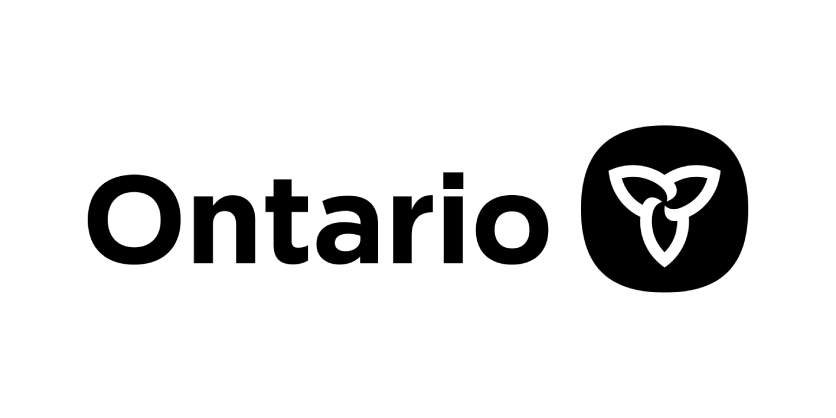Province Investing in Hydroelectric Energy Across Northern Ontario
January 24, 2025

Refurbishments will create 1,000 good-paying jobs and provide reliable, affordable and clean energy to power growth
The Ontario government is supporting Ontario Power Generation’s (OPG) plan to refurbish and expand hydroelectric generating stations across Northern Ontario. The $2 billion investment will secure up to 830 megawatts (MW) of clean electricity generation, equivalent to powering 830,000 homes, helping to meet increasing demand from electrification and fueling the province’s growth.
“Hydroelectric generating stations across Northern Ontario have been providing the province with clean electricity for over a century, and with today’s investment, we’re extending the life of these stations for decades more to help Ontario meet its growing electricity needs,” said Stephen Lecce, Minister of Energy and Electrification. “This investment and expansion will employ more than 1,000 highly skilled workers across the north who will help deliver the affordable power families and businesses need now and into the future.”
According to Ontario’s Independent Electricity System Operator, electricity demand in Northern Ontario is forecast to increase by 81 per cent by 2050. To ensure we can meet this demand, OPG and its partner, Andritz Hydropower Canada, will refurbish and expand stations across Northern Ontario including: Otter Rapids, Kipling, Aguasabon, Abitibi Canyon, Manitou Falls, Cameron Falls, Ear Falls and Alexander.
The work includes major rehabilitation of existing generating equipment that will maintain reliable and efficient operations and increase production. Once completed, the stations are expected to produce up to 40 MW of additional clean electricity each year, equivalent to powering over 40,000 more homes.
“Thunder Bay and our province are growing quickly, and we will need more power to support new homes, new investments and new infrastructure,” said Kevin Holland, MPP for Thunder Bay—Atikokan. “I’m proud to be working with Premier Ford, Minister Lecce and Ontario Power Generation to advance these major investments in clean energy that are going to support good-paying jobs across Northern Ontario.”
The work at these stations will take place over the next 10 years and create more than 1,000 highly skilled, good paying jobs across Northern Ontario. Across its entire fleet, the province and Ontario Power Generation are investing a total of $4.6 billion in Northern Ontario, Niagara Region, Cornwall and Eastern Ontario to refurbish and expand existing stations, to secure more than 5,000 MW of clean electricity and support 1,900 good paying jobs.
“Many of the hydroelectric facilities OPG is refurbishing today were developed as a result of visionary thinking a century or more ago,” said Nick Pender, OPG Senior Vice President – Renewable Generation. “Through investments like this, OPG and the Province are securing low-carbon, reliable electricity generation that Ontarians will need for generations to come.”
Investing in Ontario’s hydroelectric generating stations is just one part of Ontario’s Affordable Energy Future, as it plans for rising energy demand across the province. Investments in Northern Ontario include:
- Forest Biomass Electricity Generation – The government has extended the contract for five existing forest biomass electricity generation facilities across Northern Ontario for five years to generate clean, reliable electricity while supporting Ontario’s forestry sector.
- New Transmission Infrastructure – The Ontario government is working with transmitters to build thousands of kilometers of new transmission lines across Northern Ontario, including the Waasigan Transmission Line, the Wataynkaneyap Power Transmission Project and the Wawa-Porcupine Transmission Line.
- Incentivizing Northern Projects in Competitive Procurements – The government launched the largest competitive procurement of clean energy resources in the province’s history, which incentivizes projects located in Northern Ontario that have community support, ensuring all parts of the province are able to benefit from the province’s growing energy sector.
- Keeping Costs Down – Launching new energy efficiency programs worth $10.9 billion, including the new Home Renovation Savings Program, which will help families and businesses reduce electricity usage and save money on energy bills.
Quick Facts
- According to Ontario’s Independent Electricity System Operator (IESO), the province’s demand for electricity is forecast to increase by 75 per cent by 2050, the equivalent of adding four and a half cities the size of Toronto to the grid.
- Hydroelectricity provides approximately 25 per cent of Ontario’s electricity, serving as a reliable source of emissions-free power.
- Ontario’s grid is one of the cleanest in the world with a diverse supply mix made up of nuclear, hydroelectric, natural gas, wind, solar and bioenergy.
Related Story
Ontario Expands Largest Competitive Energy Procurement in Province’s History
The Ontario government is expanding the largest competitive energy procurement in the province’s history by 50 per cent to meet soaring energy demand. The government has increased the target for the procurement from 5,000 megawatts (MW) to up to 7,500 MW to ensure Ontario has the reliable and affordable electricity it needs to power the building of new homes, businesses and communities.





